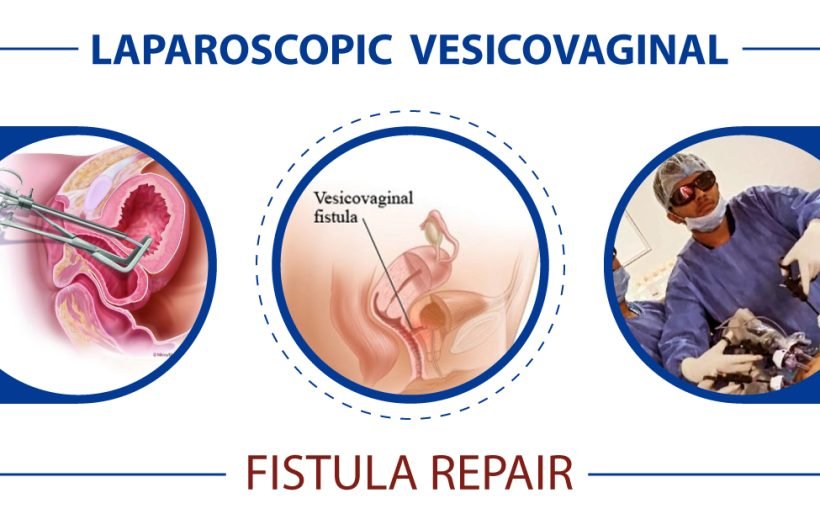What is VVF?
VVF is a medical acronym for Vesicovaginal fistula which is defined as a deformity characterized by a channel between the bladder and vagina. This channel is not a part of normal human physiology. This abnormality in females causes them to suffer from constant leakage of urine. Most of the VVFs are iatrogenic which means this deformity is usually caused by some medical examination or treatment procedure. The first line of treatment for this condition is surgical repair of the fistula. Based on the nature of this condition, VVF repair varies. However, in most women Laparoscopic VVF repair suits well for the treatment of their condition.
How common are VVFs?
Unawareness and less skillful surgeons remain the primary contributors to the incidence of VVFs in developing countries like India. There are over 3 million victims of this condition around the world who still have not repaired their vesicovaginal fistulas. Also every year, new patients with this problem exceed this number. It has been speculated that the prevalence of early childbearing, illiteracy and poor care of patients by professionals have led VVF to become common in certain countries. In some areas of the country, access to emergency medical services is very less due to which untreated cases of VVF have been piling up.
What are the types of Vesicovaginal Fistulas?
Fistulas in the vagina can be simple and small, up to 0.5 cm in diameter. However, in some patients, VVFs are of complex nature as they can be of large size, up to 2.5 cm in diameter. Most of these complex VVFs are caused due the failure to repair previous fistulas. Also, the more severe nature of this abnormality can be caused as a result of some medical examination or treatment of the vagina.
What is the procedure for VVF Diagnosis?
To examine the nature, position, and number of fistulas, a diagnosis of VVF is the first and foremost thing to do. Some of the diagnostic methods for this are as follows:
- Physical examination tests
- Filling the bladder with methylene blue solution and performing a tampon test
- Cystoscopy which can include passing a catheter through the fistula
- Cysto-urethrography
- Vaginoscopy
- Fistulography
- Ultrasound
If the diagnosis of VVF clearly indicates the need for surgery, Cystoscopy becomes part of laparoscopic treatment for encircling the fistula.
What are the steps involved in laparoscopic VVF repair
After the diagnostic Cystoscopy for encircling the fistula, the following are the steps involved in the laparoscopic surgery:
Dissecting the fistula
After putting the laparoscope inside the patient, a dissection is made between the bladder and vagina where the fistula is located by locating the catheter. This results in the exposure of the two openings of the fistula tract, one on the bladder and another on the vagina respectively. During the dissection, the surgeon mostly remains near the vagina and not the bladder. This is because the bladder bleeds more.
Suturing
After getting the two openings of the fistula, suturing is done by stitching the holes. Ideally stitching of the vagina is done longitudinally and that of the bladder is done transversally in order to avoid dropping the suture lines over each other.
Closing the wound
After suturing the opening of the fistula, the wound is sprayed with fibrin glue which acts as an adhesive barrier.
Final Cystoscopy
In order to be completely sure about the success of the surgery, one last Cystoscopy is done
What are the complications of VVF repair?
As every surgery is accompanied by the risk of complications, potential laparoscopic VVF repair complications are as follows:
- Post-surgery failure of the procedure
- Formation of fistula again and again
- Organ injuries such as in the ureter, intestines, or bowel
- Shortening of vagina
What are the advantages of laparoscopic VVF repair over open surgery?
In most patients with vesicovaginal fistula, laparoscopic surgery has a very high success rate. Patients usually do not experience complications during or after the procedure. Even the time taken for this surgery is at most 240 minutes, which is much less than it takes to perform open surgery. Less loss of blood (40 to 50ml) is another advantage of this procedure. Other than this, some other advantages of laparoscopic VVF surgery are as follows:
- More complete removal of extra tissue
- Chances of vaginal shortening remain much low
- The recovery period for this surgery is much less than for open surgery
- Less chances of visceral injury
- In terms of cosmetics, laparoscopy has a better outcome
- Minimally invasive
Conclusion
In order to increase your chances of getting a successful laparoscopic VVF repair, you must be timely put through an accurate procedure that can only be done by a professional and experienced urologist surgeon. Your VVF repair should minimize the chances of the reoccurrence of fistulas for which your doctor must be skillful in executing procedures like the interposition of flaps during VVF repair. So, in order to get a precise diagnosis and high chances of surgery success in one attempt you must have a professional urologist, like Dr. Saket Narnoli, by your side.
To get in touch with our most experienced professionals for your laparoscopic VVF repair, Call or Book an appointment at +91 99788 33094






